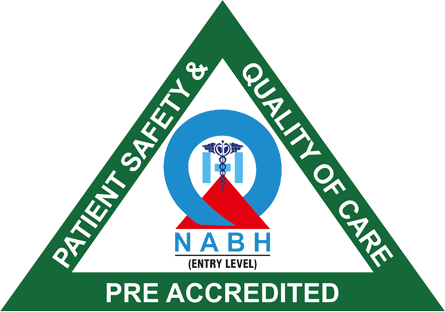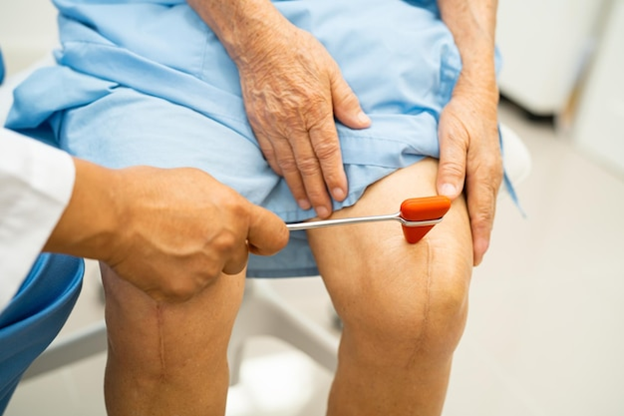Total knee replacement can help people with terrible knee pain. This surgery is often for mature adults having arthritis problems. Dealing with knee issues daily can really affect your life. Many find relief through this surgery, which involves replacing damaged areas of the knee. It allows for better movement and less discomfort over time.

It’s important to know all about knee replacement surgery before deciding on it. Knowing the facts helps set clear expectations for what’s ahead. When people understand the benefits and risks, decisions become easier to make. Recovery time varies among patients, so realistic goals are necessary. Having knowledge increases comfort and confidence when choosing a medical option.
The Basics of Total Knee Replacement
A surgical knee replacement is about swapping a bad knee joint’s worn surfaces with new, better pieces. These artificial parts are known as prostheses, designed to imitate the knee’s natural moves. It’s all about making the knee work again without the pain and stiffness caused by friction.
Components of the Procedure
- Femoral Component: Replaces the top of the thigh bone that forms part of the knee.
- Tibial Component: Acts as a platform for the shin bone to rest on.
- Patellar Component: Offers a refreshed surface for the kneecap area.
- Spacer: This plastic part fits between metals to help it glide smoothly.
These parts together improve how well your knee can move, giving back much-needed freedom.
In this procedure, doctors take out the old, worn-out parts of your knee joint. They then fit these precisely measured prosthetic pieces in their place. Often due to arthritis, worn surfaces find new life with these implants. These careful steps not only reduce pain but also help you regain mobility. People find they can tackle daily tasks much easier than before.
Ideal Candidates for Total Knee Replacement
The best people for a total knee replacement are those dealing with serious arthritis. It’s a condition like osteoarthritis that causes severe joint pain and limits movement. Some people with major sports injuries might also need knee replacement surgery. Damage to important ligaments or cartilage often makes moving difficult.
Some clear signs point to the need for a knee replacement operation. Continuous pain, not helped by other treatments, is a big clue. It’s especially concerning if that pain disturbs sleep or daily tasks. Other indicators include:
- Reduced Movement: Struggling to bend your knee or walk a short distance.
- Persistent Swelling: Inflammation that sticks around can be troublesome.
- Lifestyle Impact: Everyday life becomes tough, disrupting normal activities and hobbies.
To confirm if surgery is needed, doctors will do medical tests like imaging and physical checks. They ensure no step is missed before moving forward.
Preparing for Your Knee Replacement Surgery
Preparation for the whole knee replacement surgery is important. You should have a pre-surgery health check-up with your doctor. This will involve changes in everyday habits that aid healing later.
- Eating healthy can help you get better faster after surgery.
- Stopping smoking makes operations and recovery go smoother.
- Doing exercises helps muscles around the knee get stronger.
These measures are useful for a successful total knee replacement.
Doctors perform medical evaluations to see if you’re fit for surgery. Several tests help find any possible issues beforehand. It’s vital to arrange support for after the operation.
- Finding someone to help you at home makes recovery easier.
- Keep following up with your doctor helps fix any problems quickly.
- Ongoing therapy is essential to regain movement and strength.
These preparation steps boost the chances of a smooth recovery process.
The Total Knee Replacement Procedure: Steps and Variations
A typical total knee replacement operation involves several important steps to ensure safety. Here’s a simplified breakdown:
- Anesthesia Administration: The patient receives either regional or general anesthesia.
- Knee Incision: The surgeon makes an incision to access the knee joint carefully.
- Joint Surface Preparation: Damaged tissues are prepared for the placement of new parts.
- Implant Placement: Custom-fit prostheses are carefully placed into position.
- Wound Closure: The wound is closed using stitches or staples, then bandaged.
Modern technology, like robotic knee replacement, has made surgery less invasive. This innovation clearly helps in achieving precision and results in smaller scars.
Minimally invasive options, such as the subvastus approach, result in smaller incisions that avoid muscles, allowing faster recovery times. Various kinds of knee replacement implants include metal and ceramic materials, tailored to suit individual patient needs. Each material offers unique benefits in terms of wear and durability over time, making them suitable for respective active lifestyles.
Technologies such as Mako robotic knee replacement further personalize planning and execution of the operation, optimizing outcomes significantly for patients, thus enhancing their overall life quality post-surgery.
Recovery and Rehabilitation: Your Path to Healing
Recovery begins immediately after the surgery, with a monitored hospital stay.
- Pain Management: Medications shift from IV to oral forms over time.
- Rehabilitation Initiation: Starting with easy moves to boost blood flow and healing.
- Assistive Devices: Tools like crutches or walkers help patients move safely.
Early-stage rehabilitation focuses on simple exercises for muscle strength and joint movement.
Physical therapy for knee replacement plays a huge role in recovery afterward. Specifically designed exercises led by skilled therapists aid knee movement restoration. Therapy may feature:
- Range of Motion Exercises: Essential for better bending of the knee joint.
- Strength Training: Targets muscles around the knee, such as quadriceps.
- Walking Drills: Encourage proper walking habits and improve balance.
Sticking with therapy helps in reaching full recovery sooner or later. It leads to independent movement and less pain down the road. Continuing therapy and lifestyle changes contribute to lasting benefits, even post-recovery.
Risks and Rewards: Understanding the Tradeoffs
For those with severe knee problems, total knee replacement can be life-changing. People often find huge relief from pain, making even simple activities like walking pretty enjoyable again. The knee replacement operation boosts how well the joint works, offering better stability and more movement. Many feel a notable improvement in their life quality as they reengage with social or physical events they missed due to knee pain.
However, like any major surgery, there are possible risks involved in knee replacement surgery. Infections pose a significant concern as they can set back recovery times considerably. Some individuals may face blood clots, requiring careful attention during the early recovery period. There is also a chance of needing another surgery if the first implant wears out sooner than anticipated. Nevertheless, advancements in surgical knee replacement techniques have made these issues less common nowadays. Knowing about these risks helps people make informed decisions.
Making Informed Decisions: Choosing the Right Approach and Surgeon
Choosing the right surgeon for your total knee replacement is crucial. Making sure you and the surgeon share similar expectations encourages success. Before deciding on a surgeon, discuss the available methods like robotic knee replacement, and understand what benefits each approach brings.
Aligning with your doctor’s advice ensures the best decision for your health needs and goals. Each person has unique lifestyles and requirements that influence this choice.
Selecting the right implants for your total knee replacement needs careful thought. Consult with your doctor about your lifestyle and future needs to find the perfect fit. Minimally invasive knee replacement options could offer a quicker recovery if that suits your goals better.
Being clear about long-term objectives with your surgeon helps in choosing a suitable approach. It assures that the selected method supports overall health paths and aspirations.
Take the First Step Toward Pain-Free Movement
Don’t let chronic knee pain hold you back from living life to the fullest. At Sant Gajanan Maharaj Hospital, our expert orthopedic team offers advanced Total Knee Replacement with personalized care, faster recovery, and long-lasting relief.
Book your consultation today and regain the freedom to walk, move, and live without limits.
Sant Gajanan Maharaj Hospital – Where healing meets trust.




